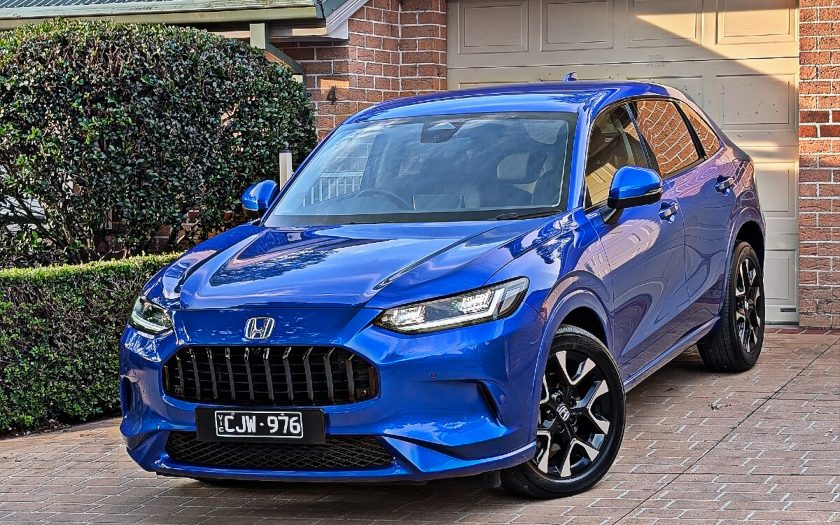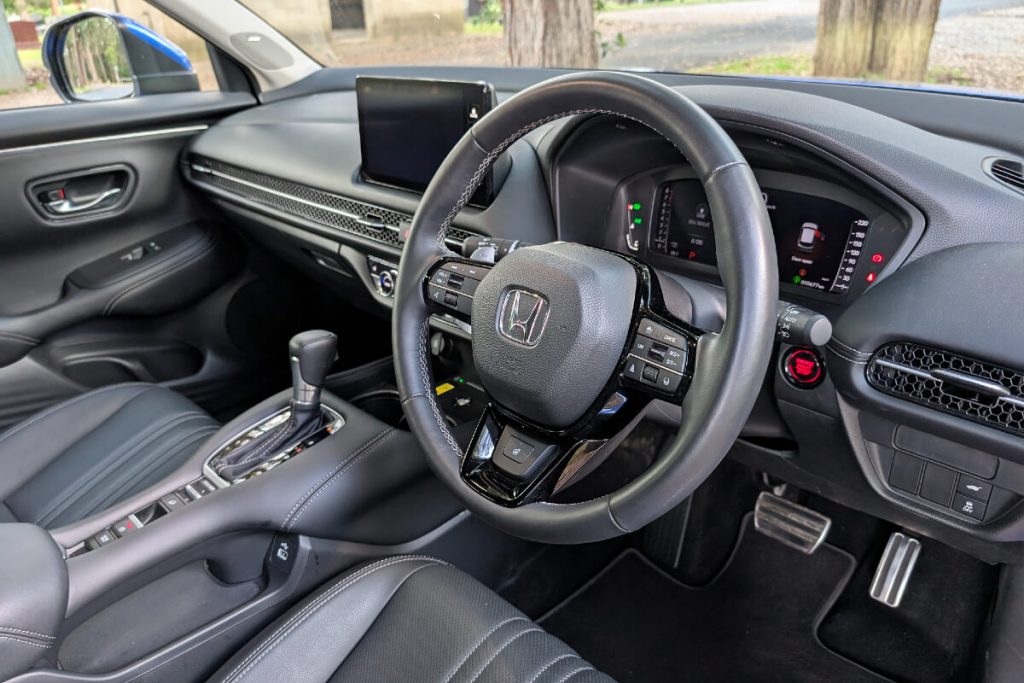Chris Riley tests the 2024 Honda ZR-V small SUV with pricing, specs, ride and handling, safety, verdict and everything the over-50 driver needs to know.
Summary: Overall, the ZR-V is an appealing package, but it’s going to struggle with a price disadvantage against the Chinese opposition. Services every 10,000km won’t help, either.
2024 Honda ZR-V VTi-LX small SUV
Pricing: $49,000 (driveaway)
Warranty: Five-years, unlimited km, five-years roadside assist
Safety: Four ANCAP stars (2023)
Engine: 1.5-litre turbo intercooled DOHC with VVT
Service intervals: 12 months or 10,000km (capped at $199 per service)
Power: 131kW @ 6000rpm
Torque: 240Nm @ 4500rpm
Transmission: CVT, front-wheel drive
Body: 4568mm (long); 1840mm (wide); 1620mm (high)
Build country: Japan
Kerb weight: 1510kg
Towing capacity: 1500kg
Luggage storage: 370L (seats up), 1302L (seats folded)
Wheels: 18-inch alloy
Tyres: 225/55R18
Spare wheel: space saver
Ground clearance: 186mm
Turning circle: 11.0m
Fuel tank: 57 litres
Consumption: 7.4L/100km (91 RON unleaded)
Consumption on test: 8.0L/100km (250km), 8.1L/100km (2000km)
seniordriveraus consumption on test: not tested

[review]
You might think the ZR-V is the smallest of Honda’s SUVs.
But you’d be wrong because the latecomer actually slots between the HR-V and long-serving CR-V.
It’s taken us a while to catch up with the ZR-V, but it has been worth the wait because ZR-V is the pick of the bunch.
What’s it cost?
Based on the Civic hatch, ZR-V is a five-seat, mid-sized, front-wheel drive crossover.
It’s available in three petrol-only grades plus a range-topping hybrid, petrol-electric version.
Prices start at $39,900 for the VTi X, followed by $43,400 for the VTi L, $49,000 for the VTi LX and $55,400 for the hybrid e:HEV LX.
All prices are driveaway.

Our test vehicle was the ZR-V VTi LX priced at $49,000.
Standard kit includes 18-inch wheels, LED lights front and back, leather trim, dual-zone climate control, 10.2-inch digital instrument cluster, keyless entry and push-button start, walk-away door locking, power adjustment for the front seats, heated front and rear seats, plus heated steering wheel.
There’s also rear privacy glass, a frameless rear vision mirror, an electric parking brake, auto-dimming rear-view mirror, traffic sign recognition, auto high beam, auto lights and wipers, front and rear parking sensors and a hands-free power tailgate.
Infotainment is headlined by a smallish 9.0-inch touchscreen, with built-in navigation, AM/FM and DAB+ digital radio, Bluetooth with support for voice control and audio streaming wireless Apple Carplay and wired Android Auto and over-the-air updates.
There are two USB ports in the front, one USB-A the other USB-C, plus two more USB-C ports in the back and 12-volt outlets in the front and luggage area.
Wireless charging is standard on this model.
ZR-V unexpectedly scores a four-star safety for Australia, despite having 11 airbags, including front-centre and driver’s knee airbag.
Apparently, a different front bumper beam is fitted to Australian vehicles, which affected test performance in some test impact locations.
While no observable effect on test performance was identified, ANCAP says Honda is yet to provide information as to why the additional beam has been excluded.
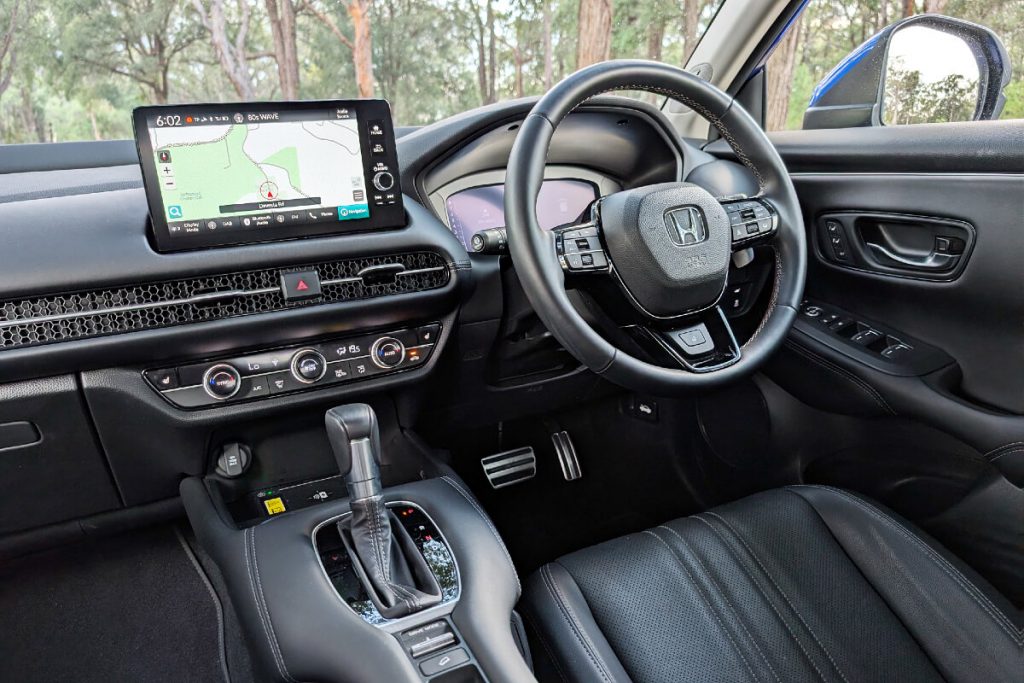
Active safety includes autonomous emergency braking with pedestrian and cyclist detection, adaptive cruise control with low-speed follow, driver attention monitoring, lane-keep assist, traffic jam assist, traffic sign recognition, front and rear parking sensors, plus tyre pressure monitoring.
A space saver spare is supplied in the event of a flat tyre.
ZR-V comes with a five-year unlimited kilometre warranty, with 24/7 roadside assistance and five years of free access to Honda connected services, for what it’s worth.
Service is 12 months/10,000km and capped at $199 per visit.
What’s it go like?
ZR-V is a good-looker, in an understated way with its Maserati-inspired grille.
It’s inoffensive, comfortable and easy to drive, and provides adequate accommodation for four adults – five at a pinch.
The cabin feels classy with soft-touch surfaces and a full-width mesh grille that hides the normally exposed front air vents.
Controls are simple and generally easy to use as we have come to expect from Honda over the years.
Physical buttons are offered to the right side of the touchscreen for oft used functions, with other controls are located lower down for the air conditioning.
The instrument panel can be configured as dials or bars and you can select detailed information to display, but it lacks the bells and whistles of competitor systems.
The 1.5-litre turbocharged four-cylinder petrol engine drives the front wheels through a CVT-style continuously variable automatic transmission.
It produces 131kW of power at 6000 rpm and 240Nm of torque between 1700 and 4500 rpm.

The transmission supports manual gear changes, with change paddles and six steps or pseudo gears.
There are also three drive modes from which to choose: Eco, Normal and Sport, which are self-explanatory.
Fuel consumption for this model is a claimed 7.2L/100km and it takes standard 91 unleaded.
We were getting 8.0L/100km from the 57-litre tank after about 250km of driving, including an enthusiastic spell on our favoured test route.
This is very close to the long-term 8.1L/100km average that the car showed after almost 2000km.
The 1.5-litre turbo feels a little underdone on torque, but plant it and the thing takes off well enough.
We tried this several times and although the initial response is a little tardy, it quickly recovered, the revs ramping up to around 5500 rpm where the needle hovered.
We kept waiting for the transmission to change up, but of course that didn’t happen – because it’s a CVT.
Instead, like a rubber band, the drive ratio changes to optimise response.
Sport mode proved pretty good, but for ultimate control changing gears manually produced the most satisfying result.
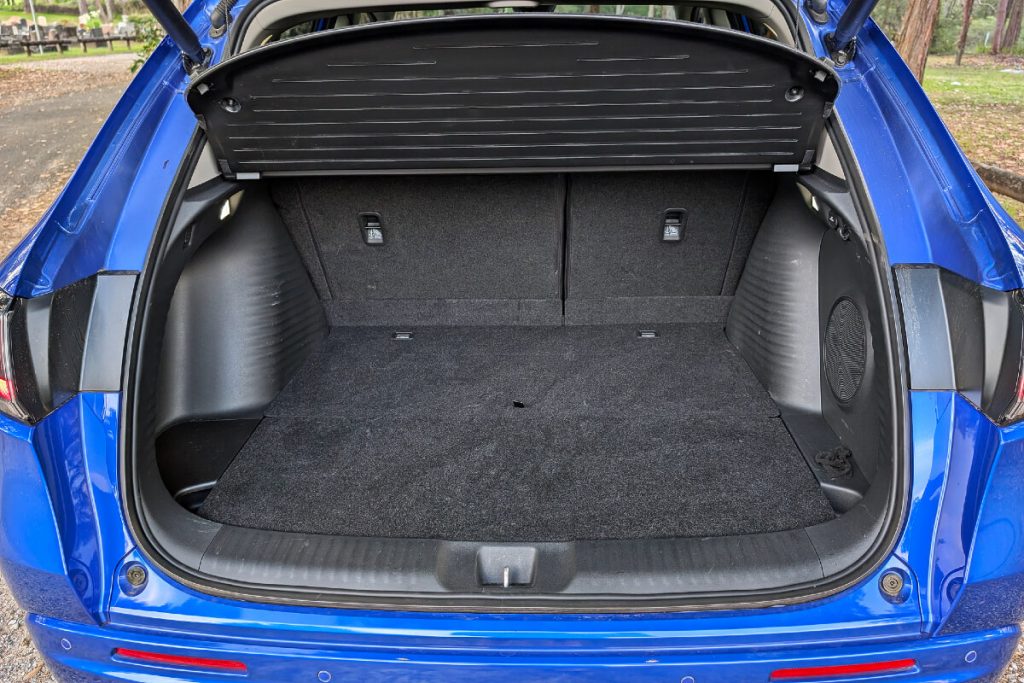
Ride and handling are surprisingly good, remembering this is a one-size-fits-all family SUV.
We had to push quite hard to get the car out of shape.
Not unexpectedly, the engine does become a little harsh under hard acceleration.
But engine, wind and road noise are fairly subdued the rest of the time – with the exception of coarse bitumen.
It’s a common theme.
Unlike CarPlay, Android Auto requires a cable to connect your phone to the infotainment system, with a choice of USB-C or older USB-A ports in front.
Having just purchased a new cable for this task, we were disappointed to discover that the USB-C to C port does not support data transfer.
Unlike the X-Trail that we drove recently, however, we were able to maintain a stable USB connection with USB-A.
So, remember to pack one of each sort – just in case.
According to the specs, this thing is supposed to have a premium Bose 12-speaker sound system, including a subwoofer.
Not seeing it guys. Where are the badges declaring its existence?
If you’ve got it, flaunt it – that’s what we say!
What we like
- Compact
- Smart styling
- 11 airbags
- Walk-away locking
What we don’t like
- A little heavy on fuel
- Parking brake doesn’t engage automatically
- Rear vision limited
- 9.0-inch touchscreen small by present-day standards
What over-50s need to know
ZR-V is just what the doctor ordered.
A classy compact SUV that’s easy to live with.
Easy to drive, easy to get in and out of and easy on the eyes.
The only blot in the ZR-V’s otherwise spotless copybook is the price. That and the four-stars for safety.
At $49,000 it’s pretty steep for what is a smallish SUV, especially when you line it up against the cheaper and larger Chinese offerings.
And therein lies the problem, not just for Honda but all the established brands in the Australian new car market.
At least Honda has a strategy.
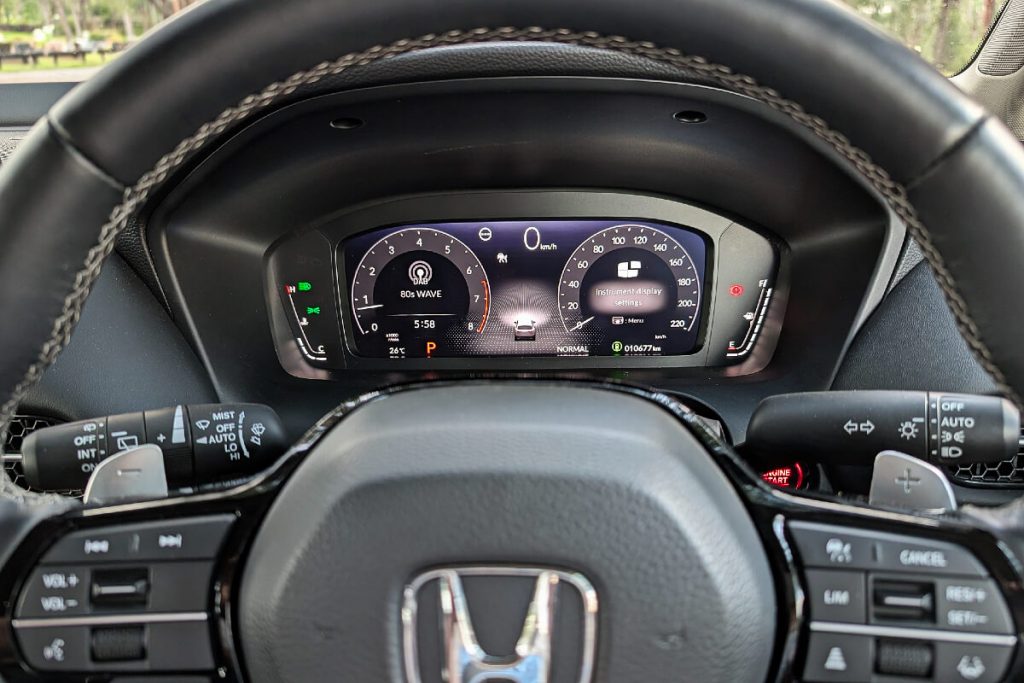
seniordriver comments
The Honda ZR-V realty sums up the challenges facing manufacturers by the Chinese. The newcomers are bigger, offer more features and cheaper. It’s going to be a tough sell for Honda.
And that’s a shame, because the ZR-V is an overall appealing package.
The capped price servicing is an appealing feature – it’s great being able to know exactly what the car is going to cost you over the coming five years.
Not so pleasing is having to connect Android Auto using a cable to the USB port, and it’s also disappointing that the USB-C to C cable doesn’t support data transfer. And one final whinge: servicing every 10,000km is well below average in these days of 20,000km service intervals.
